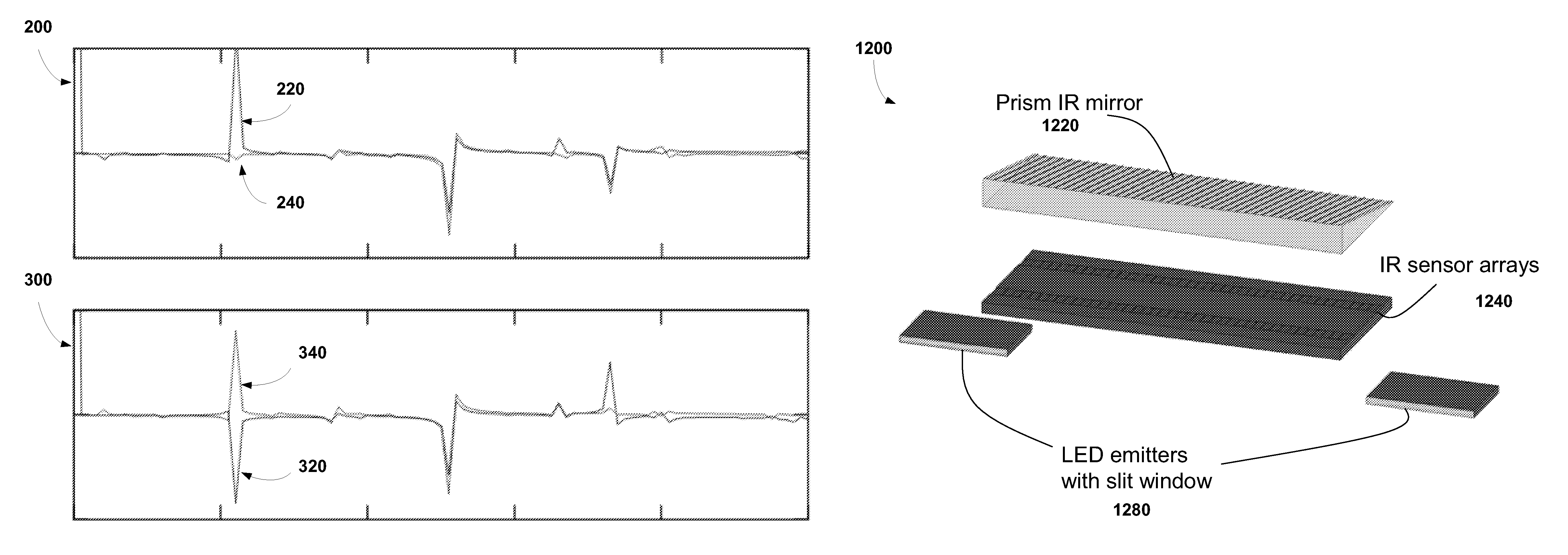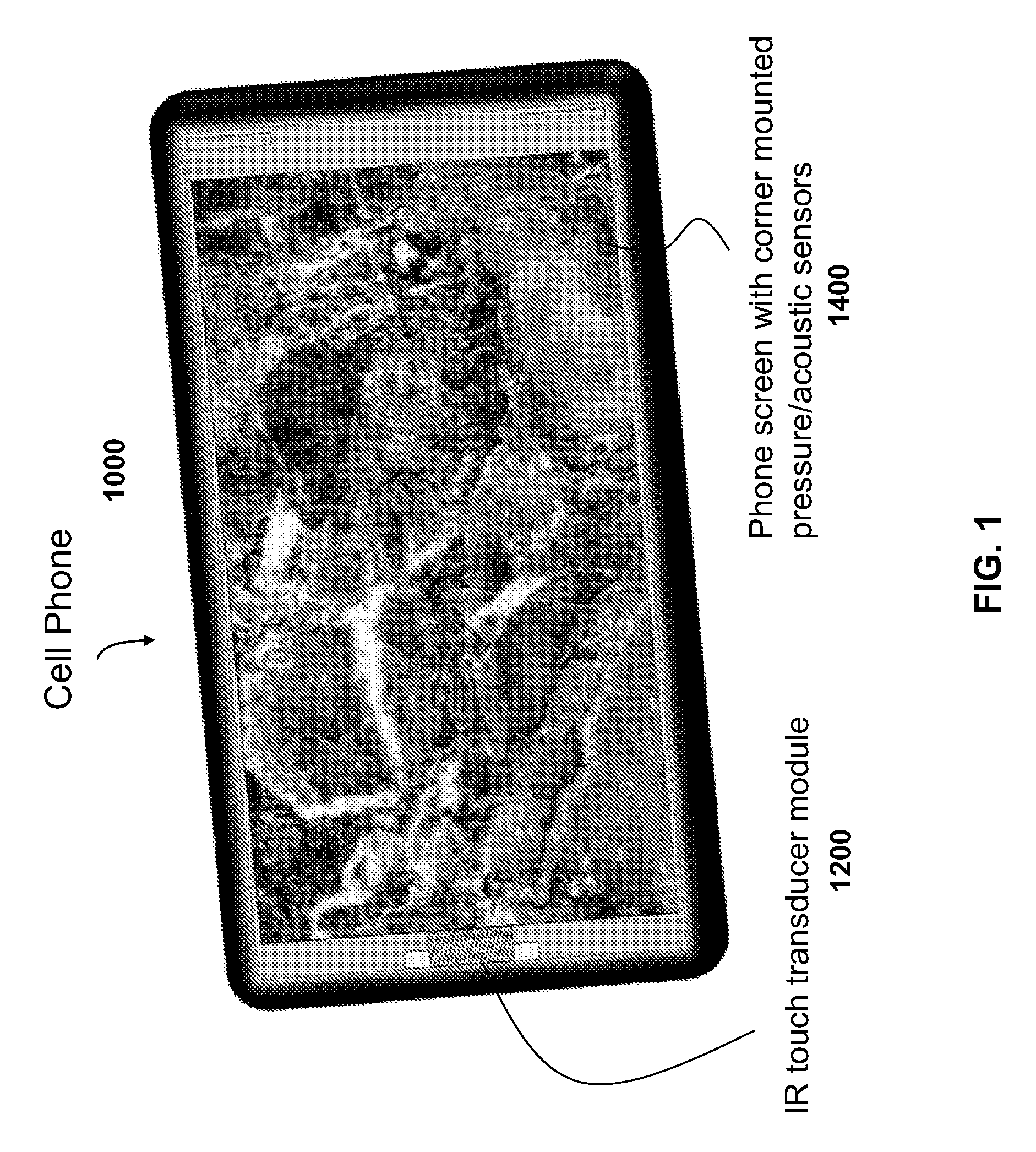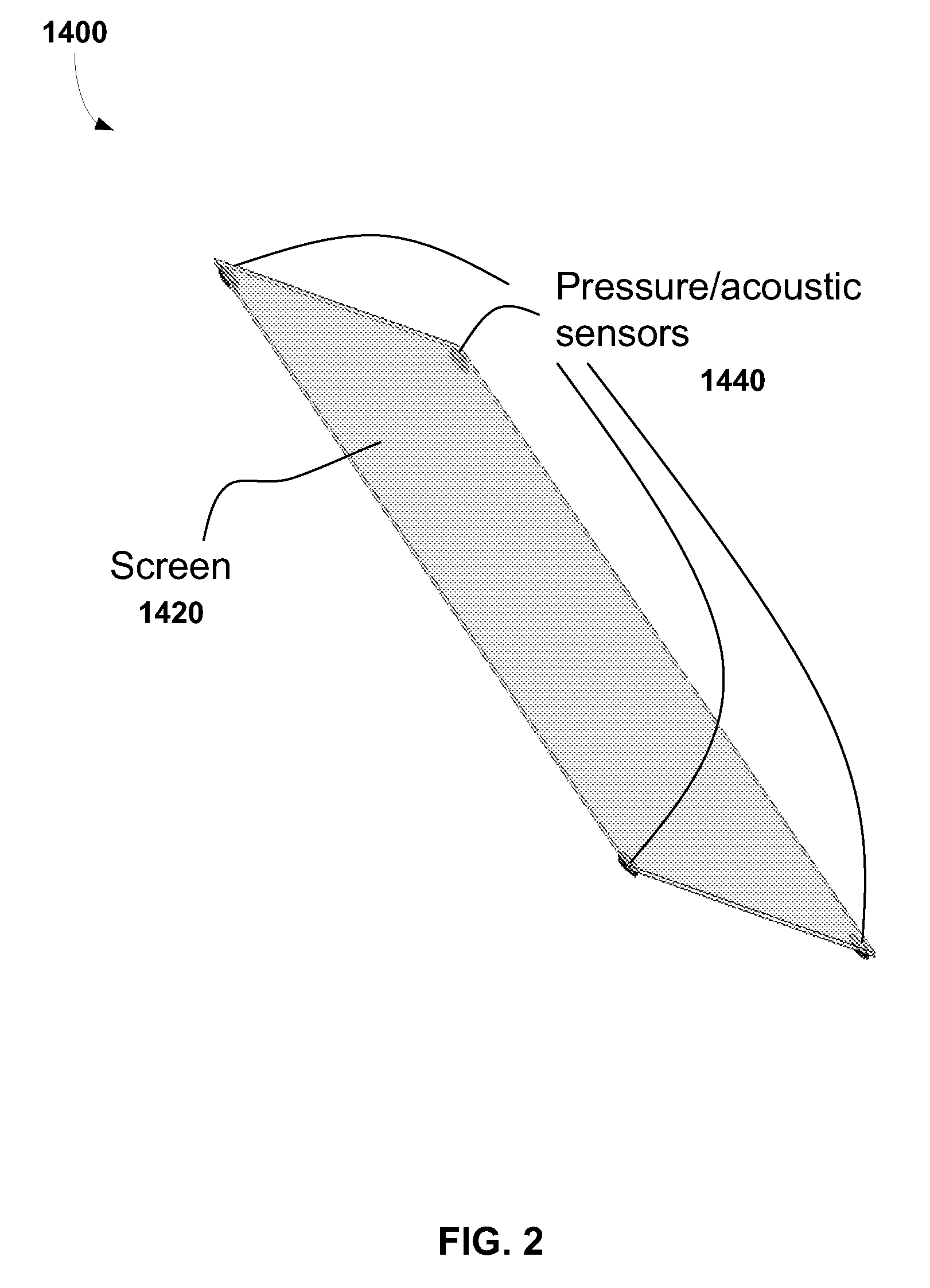System and method for contactless touch screen
a touch screen and touch technology, applied in the field of touch sensitive screens, can solve the problems of reducing increasing manufacturing cost, and far more expensive touch technology implementation, and achieves the effects of improving light transmission and image clarity, improving positioning reliability, and enhancing touch-based operations such as virtual keying and gesture inpu
- Summary
- Abstract
- Description
- Claims
- Application Information
AI Technical Summary
Benefits of technology
Problems solved by technology
Method used
Image
Examples
Embodiment Construction
[0019]For the purposes of this disclosure, a computer readable medium stores computer data in machine readable form. By way of example, and not limitation, a computer readable medium can comprise computer storage media and communication media. Computer storage media includes volatile and non-volatile, removable and non-removable media implemented in any method or technology for storage of information such as computer-readable instructions, data structures, program modules or other data. Computer storage media includes, but is not limited to, RAM, ROM, EPROM, EEPROM, flash memory or other solid-state memory technology, CD-ROM, DVD, or other optical storage, magnetic cassettes, magnetic tape, magnetic disk storage or other mass storage devices, or any other medium which can be used to store the desired information and which can be accessed by the computer.
[0020]For the purposes of this disclosure a module is a software, hardware, or firmware (or combinations thereof) system, process o...
PUM
 Login to View More
Login to View More Abstract
Description
Claims
Application Information
 Login to View More
Login to View More - R&D
- Intellectual Property
- Life Sciences
- Materials
- Tech Scout
- Unparalleled Data Quality
- Higher Quality Content
- 60% Fewer Hallucinations
Browse by: Latest US Patents, China's latest patents, Technical Efficacy Thesaurus, Application Domain, Technology Topic, Popular Technical Reports.
© 2025 PatSnap. All rights reserved.Legal|Privacy policy|Modern Slavery Act Transparency Statement|Sitemap|About US| Contact US: help@patsnap.com



